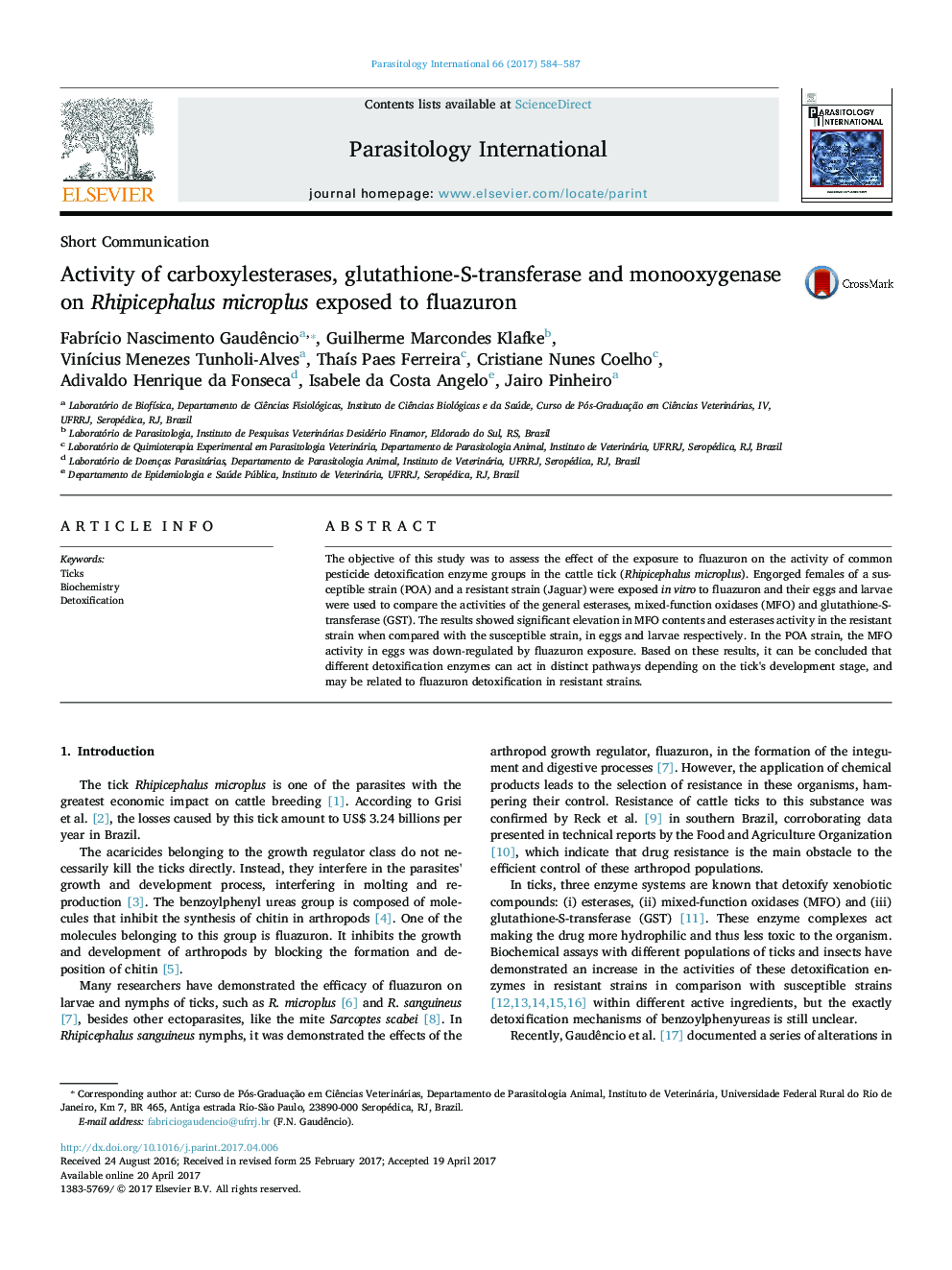| Article ID | Journal | Published Year | Pages | File Type |
|---|---|---|---|---|
| 5674229 | Parasitology International | 2017 | 4 Pages |
â¢Different detoxification enzymes act in distinct ways depending on the tick's development stage.â¢Monooxygenases contribute in detoxification processes of fluazuron in eggs in the resistant strain.â¢Carboxylesterases contribute in detoxification processes of fluazuron in larvae in the resistant strain.
The objective of this study was to assess the effect of the exposure to fluazuron on the activity of common pesticide detoxification enzyme groups in the cattle tick (Rhipicephalus microplus). Engorged females of a susceptible strain (POA) and a resistant strain (Jaguar) were exposed in vitro to fluazuron and their eggs and larvae were used to compare the activities of the general esterases, mixed-function oxidases (MFO) and glutathione-S-transferase (GST). The results showed significant elevation in MFO contents and esterases activity in the resistant strain when compared with the susceptible strain, in eggs and larvae respectively. In the POA strain, the MFO activity in eggs was down-regulated by fluazuron exposure. Based on these results, it can be concluded that different detoxification enzymes can act in distinct pathways depending on the tick's development stage, and may be related to fluazuron detoxification in resistant strains.
Graphical abstractDownload high-res image (93KB)Download full-size image
